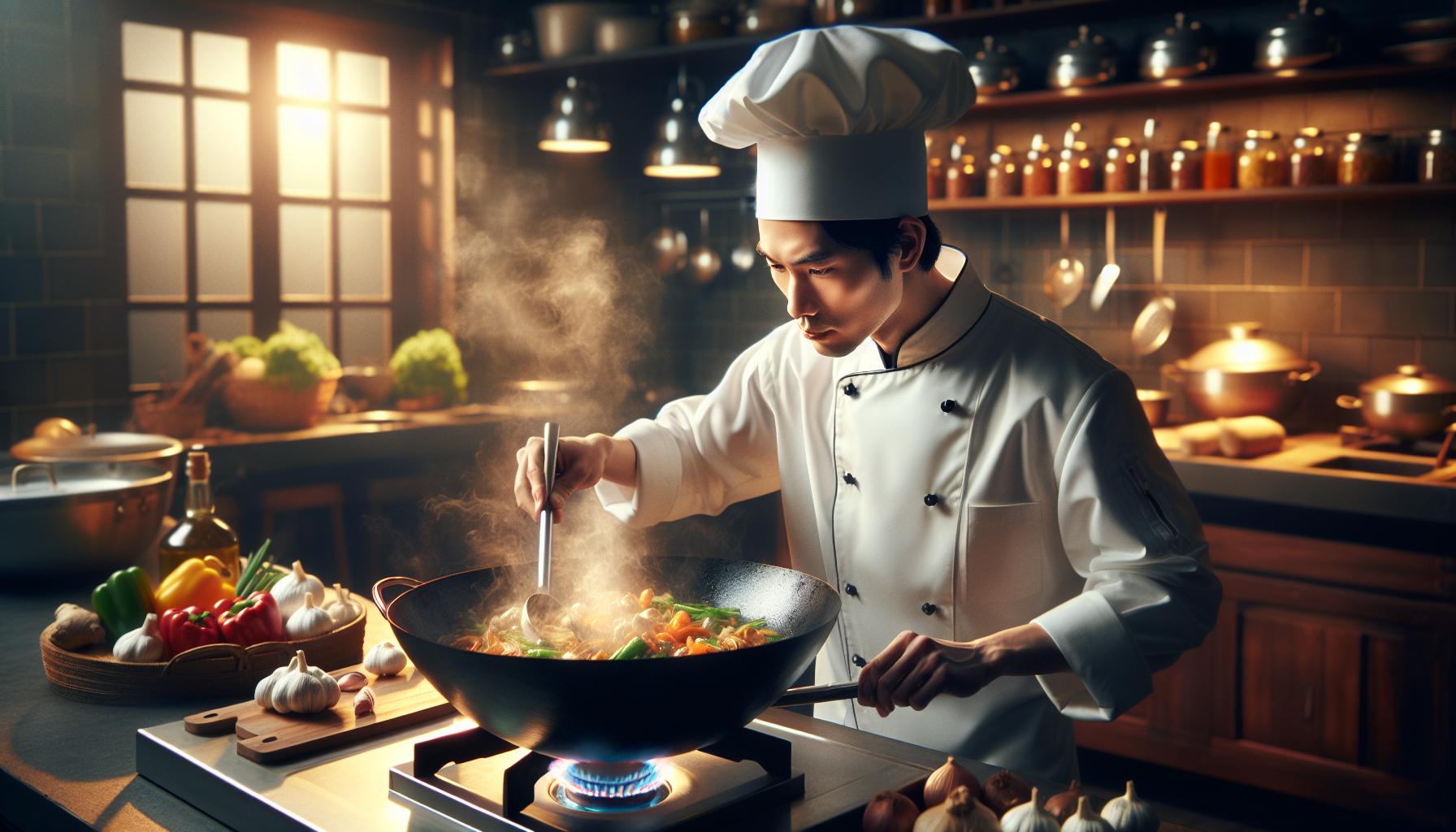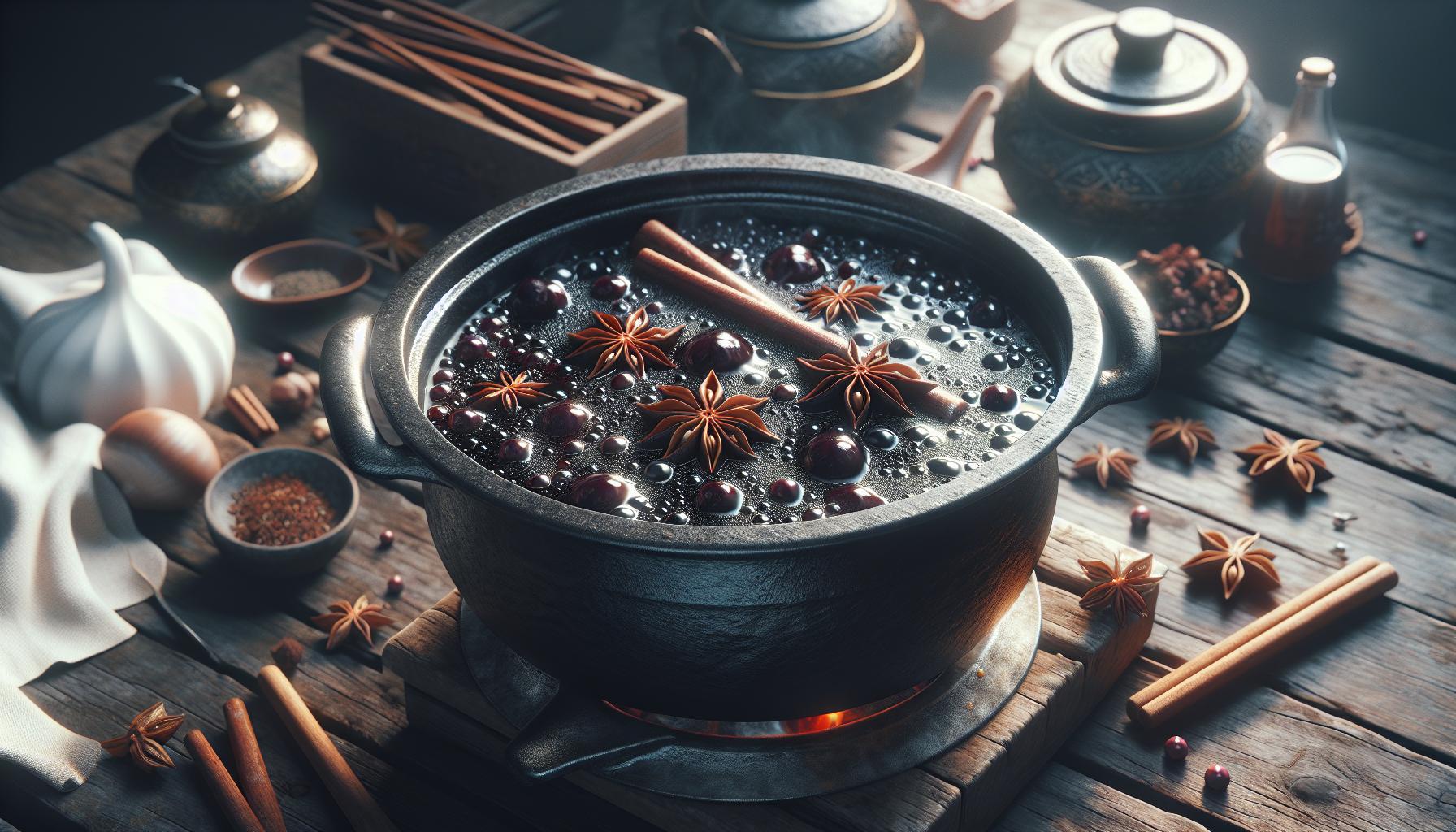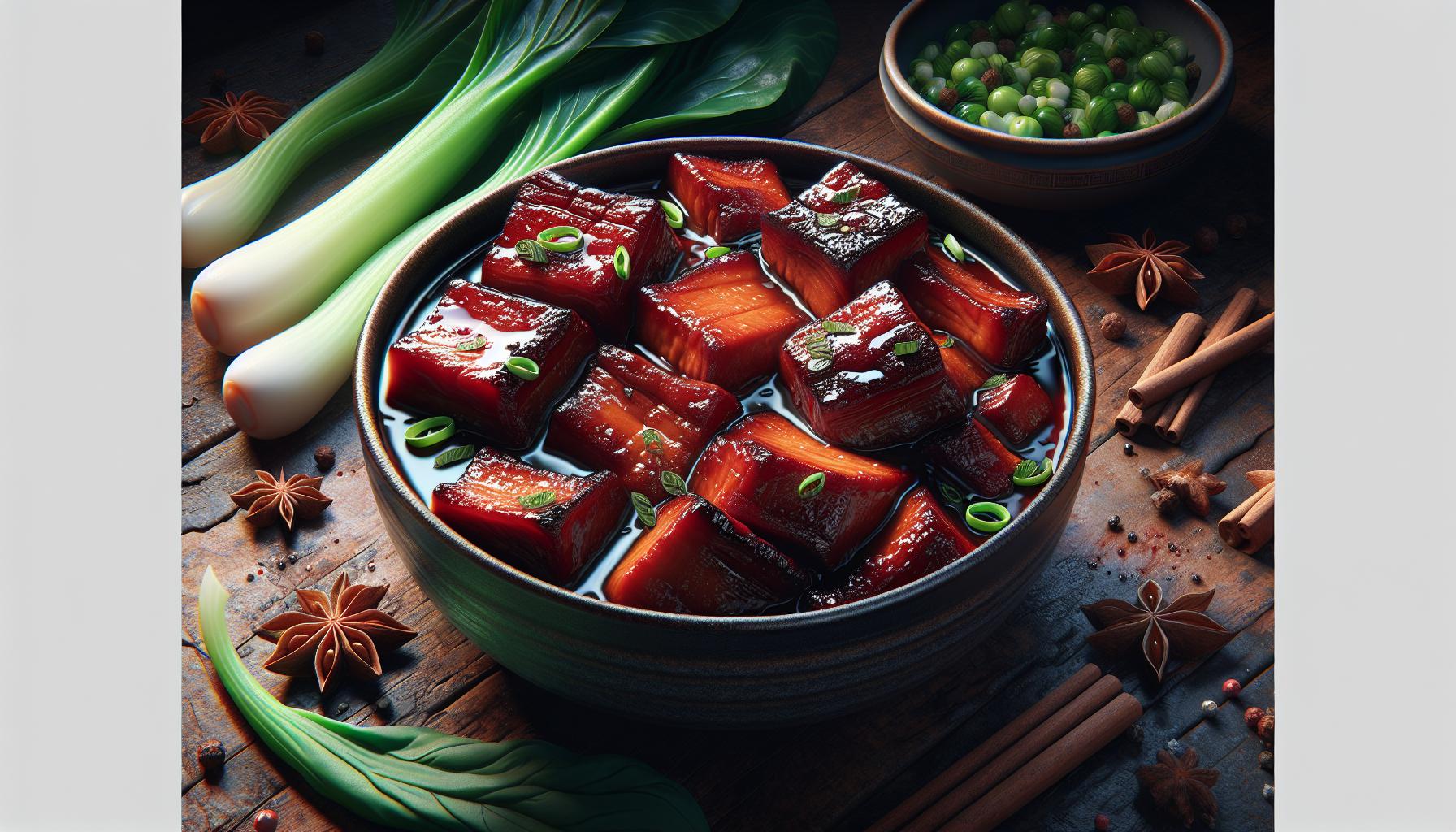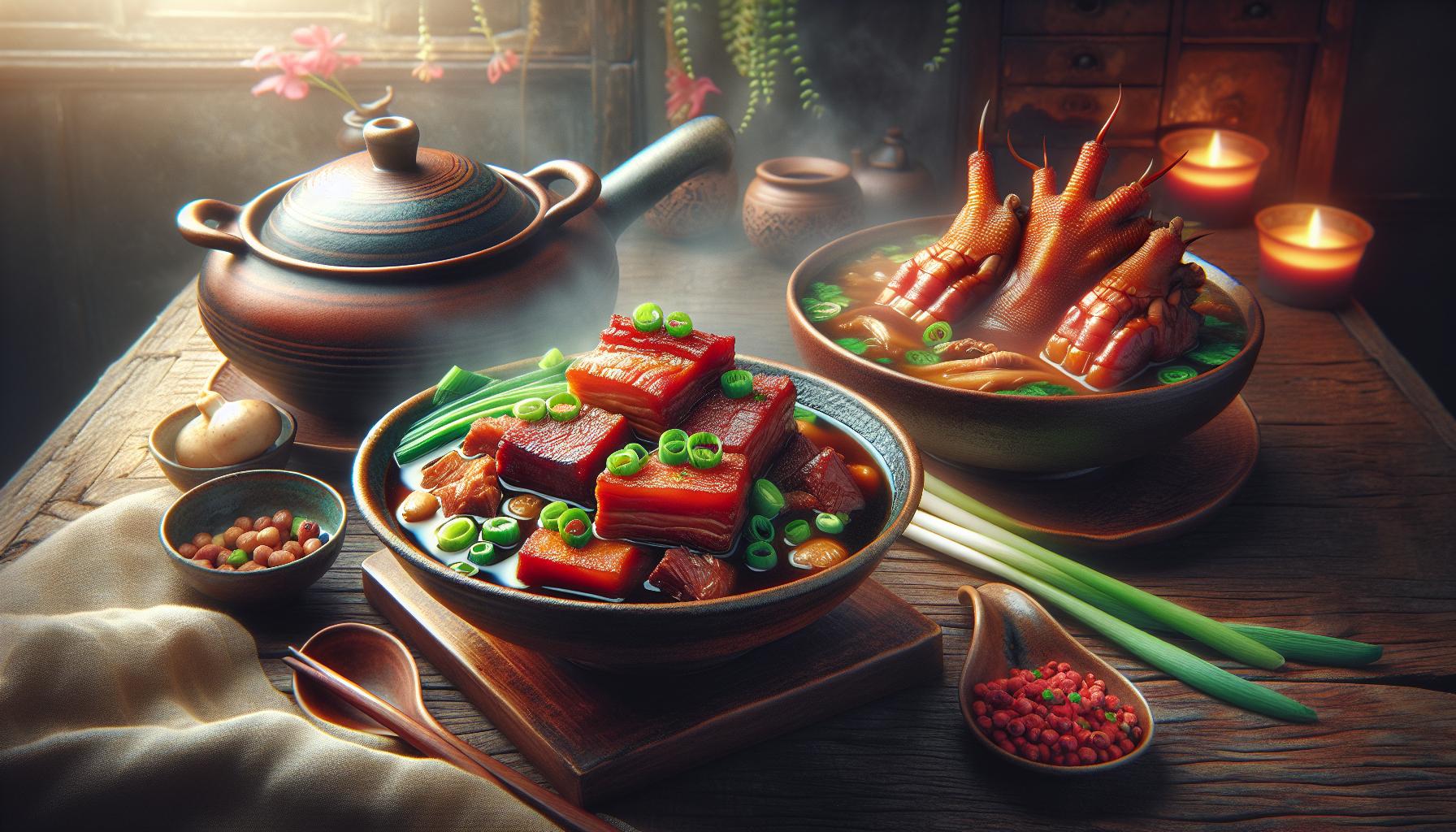
Chinese cuisine has mastered the art of slow cooking through centuries of culinary innovation and tradition. Among its diverse cooking techniques one method stands out for its ability to transform tough ingredients into tender morsels of flavor – the gentle art of red cooking or “hong shao.”
While stir-frying might be China’s most famous cooking technique red cooking takes a more patient approach. This slow-simmering method involves braising meat vegetables or tofu in a flavorful mixture of soy sauce wine and aromatic spices. It’s like giving ingredients a relaxing spa day that can last anywhere from 30 minutes to several hours letting them soak up all those wonderful flavors until they practically melt in your mouth.
Which Of The Following Chinese Cooking Techniques Involves Simmering Food For A Long Period Of Time?
Chinese simmering techniques form the foundation of several traditional cooking methods that create depth of flavor through slow, gentle heat application. These methods transform tough ingredients into tender, flavorful dishes through extended cooking times.
What Is Lu Wei Cooking?
Lu Wei cooking involves simmering ingredients in a master stock flavored with soy sauce, star anise, cinnamon bark, dried tangerine peel, bay leaves, ginger root, garlic cloves, rock sugar, rice wine, white peppercorns, Sichuan peppercorns, fennel seeds, cloves, licorice root, cassia buds, and galangal. This technique produces dishes like braised duck, beef, eggs, tofu, or various vegetables. The master stock gains complexity over time as more ingredients are cooked in it, with some restaurants maintaining their Lu Wei stock for decades. The simmering process typically takes 2-3 hours, allowing the ingredients to absorb the rich flavors while maintaining their structural integrity.
The Art of Red Braising
Red braising (hong shao) creates caramelized flavors through a two-stage cooking process. The technique begins with searing ingredients in hot oil until they develop a golden-brown exterior. A mixture of dark soy sauce, rock sugar, Shaoxing wine, ginger, scallions, and aromatics creates the signature red-brown color. The ingredients simmer in this liquid for 90-120 minutes at low heat, resulting in meat that falls off the bone or vegetables that become tender while retaining their shape. Red braising works exceptionally well with pork belly, chicken thighs, beef chunks, tofu, eggs, mushrooms, daikon radish, or bamboo shoots.
Key Elements of Chinese Slow Cooking


Chinese slow cooking techniques require precise control of essential elements to achieve optimal results. Two fundamental aspects determine the success of slow-cooked dishes: temperature management and systematic flavor development.
Temperature Control
Maintaining a consistent temperature between 185°F to 205°F (85°C to 96°C) creates the ideal environment for Chinese slow cooking. Low heat prevents protein fibers from toughening while allowing collagen to break down into gelatin. A visible gentle simmer with small bubbles rising to the surface indicates the correct temperature range. Professional Chinese chefs use specialized clay pots or heavy-bottomed woks to distribute heat evenly throughout the cooking process. Monitoring the liquid level ensures ingredients remain submerged for uniform cooking results.
Flavor Development
Flavor layers build progressively during the extended cooking process through three distinct stages. The initial stage releases aromatic compounds from whole spices like star anise cinnamon sticks into the cooking liquid. Secondary flavors emerge as proteins break down releasing amino acids creating umami notes. The final stage concentrates these flavors as the liquid reduces producing intense savory notes. Ingredients like Shaoxing wine ginger root garlic scallions soy sauce rock sugar contribute complementary taste elements throughout the cooking duration. The extended simmering time allows these flavors to fully penetrate the main ingredients.
Master Sauce And Its Role


Master sauce, known as Lu Zhi (卤汁) in Chinese cuisine, plays a central role in slow-cooking techniques through its complex blend of aromatics, spices, and seasonings. This foundational cooking liquid evolves and deepens in flavor with repeated use.
The Traditional Master Stock Method
Master stock preparation starts with combining dark soy sauce, light soy sauce, Chinese cooking wine, rock sugar, ginger, garlic, star anise, cinnamon, bay leaves, and Sichuan peppercorns in a large pot. The mixture simmers at 185°F (85°C) for 30 minutes to release essential oils from spices. Professional Chinese kitchens maintain their master stocks for decades, with some documented cases spanning over 100 years.
| Master Stock Components | Typical Ratio |
|---|---|
| Dark Soy Sauce | 1 part |
| Light Soy Sauce | 2 parts |
| Cooking Wine | 1 part |
| Water | 8 parts |
| Rock Sugar | 50g per liter |
| Aromatics & Spices | 100g per liter |
Professional chefs strain, cool, and store the master stock between uses, adding fresh aromatics periodically to maintain flavor intensity. Regular boiling maintains food safety standards, allowing the stock to develop richer, more nuanced flavors over time.
Popular Chinese Dishes Using Long Simmering


Chinese cuisine features numerous dishes that rely on extended simmering times to develop deep flavors and tender textures. These dishes showcase the mastery of slow-cooking techniques passed down through generations.
Classic Red-Braised Pork Belly
Red-braised pork belly (Hong Shao Rou) exemplifies Chinese simmering techniques through its melt-in-your-mouth texture and rich flavor profile. The dish transforms thick cuts of pork belly through a 90-minute simmering process in a mixture of soy sauce, Shaoxing wine, rock sugar and aromatic spices. The extended cooking time breaks down tough connective tissues while allowing the meat to absorb the complex flavors of star anise, cassia bark and ginger. The finished dish presents glossy, caramelized exterior with tender meat that separates with minimal pressure.
Slow-Cooked Soups And Broths
Chinese slow-cooked soups incorporate ingredients like dried scallops, mushrooms, chicken feet and pork bones to create nutrient-rich broths. Double-boiled soups simmer for 4 to 6 hours in specialized ceramic vessels that trap steam and concentrate flavors. Popular varieties include silkie black chicken soup with goji berries, lotus root pork rib soup and fish maw soup with red dates. The prolonged cooking extracts collagen from bones creating a smooth, gelatinous texture while herbs and aromatics infuse the liquid with medicinal properties valued in traditional Chinese medicine.
Benefits Of Chinese Long Simmering Methods
Chinese long simmering techniques transform ingredients through extended cooking periods at low temperatures. These methods create dishes with complex flavors while preserving nutritional value.
Enhanced Flavor Extraction
Long simmering extracts deep flavors from ingredients through sustained heat application. The slow cooking process releases compounds from spices like star anise cinnamon into the cooking liquid. Aromatics such as ginger garlic scallions infuse their essence throughout the dish creating layered taste profiles. Proteins release glutamates during extended cooking enhancing umami notes. The reduction of cooking liquid concentrates flavors creating rich sauces with depth complexity. Master stocks develop increasingly complex profiles over time absorbing essences from multiple ingredients.
Tender And Succulent Results
Long simmering breaks down tough connective tissues in meat producing fork-tender textures. Collagen transforms into gelatin at temperatures between 185°F to 205°F creating silky mouth feel. Proteins maintain their structural integrity without becoming tough or dry. Root vegetables absorb flavors while maintaining their shape texture. Tofu develops a porous texture that captures sauces broths effectively. Extended cooking allows ingredients to fully integrate creating harmonious dishes with consistent textures throughout.
Chinese Long Simmering Techniques
Chinese long simmering techniques stand as pillars of traditional cooking methods that create exceptional depth and complexity in dishes. The art of slow cooking through methods like red cooking hong shao and Lu Wei demonstrates the remarkable patience and skill required to master these time-honored practices.
The careful balance of temperature control time management and ingredient selection transforms simple components into extraordinary dishes. As these techniques continue to influence modern cooking they remind us that sometimes the most rewarding culinary experiences come from taking things slow and letting flavors develop naturally.
Professional chefs and home cooks alike can appreciate how these methods honor both tradition and taste creating dishes that are not just meals but expressions of cultural heritage.


